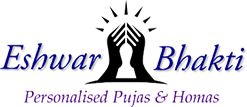Yoga is mentioned in the Rigveda, and also referenced in the Upanishads. Yoga in Indian traditions, however, is more than physical exercise; it has a meditative and spiritual core. Yoga is the physical, mental, and spiritual practices or disciplines which originated in ancient India with a view to attain a state of permanent peace. The term yoga can be derived from either of two roots, yujir yoga (to yoke) or yuj samādhau (to concentrate).The Yoga Sutras of Patanajli defines yoga as "the stilling of the changing states of the mind".
Pranayama is the practice of breath control in yoga. In modern yoga as exercise, it consists of synchronising the breath with movements between asanas, but is also a distinct breathing exercise on its own, usually practised after asanas. Prana creates an aura around the body. It flows through thousands of subtle energy channels called nadis and energy centers called chakras. The quantity and quality of prana and the way it flows through the nadis and chakras determines one’s state of mind. In texts like the Bhagavad Gita and the Yoga Sutras of Patanjali, and later in Hatha yoga texts, it meant the complete cessation of breathing. Pranayama is the fourth "limb" of the eight limbs of Ashtanga Yoga mentioned in the Yoga Sutras of Patanjali (a Hindu sage).
Benefits of Daily Yoga and Pranayama:
- Brings harmony between the body, mind, and spirit, making one physically, mentally, and spiritually strong.
- The regular practice of breathing exercises can completely change the quality of life that one is leading.
- It brings clarity to the mind and good health to the body. Increases and enhances the quantity and quality of prana, thereby increasing our energy levels.
- Makes one energetic, enthusiastic, calmer and positive. Such a state of mind helps us in making better decisions, having mental strength when dealing with adversities and feeling happier.
- Clears blocked nadis and chakras, thereby expanding your aura and heightening the spirit.
Profile of our expert:
- Trained at the famous Patanjali International Yoga Foundation, Rishikesh.
- Expertise in all types of Yoga Aasan and Pranayama.
- Over 15 years of experience.
- Has trained more than 1500 people from all walks of life.
Session Options:
- One Week: You may initially want to choose 5 sessions, to get an experience.
- Three Weeks: You can start off with three weeks package (18 sessions), which can be spread over a month by having 4-5 sessions in a week.
- One month: The best package with 26 sessions in a month. You can choose weekly off.
Session duration: 1 hour
Mode of training: Online sessions on Zoom
Please mention your preferred timings in the "Instructions" box at checkout.
Performing your puja ritual with love and utmost care is our motto. We perform only Individual Personalized rituals. No group rituals. Here are the key steps to help you understand the process:
- You add a ritual to your shopping cart, after reading the benefits and based on your concerns.
- At the time of booking your ritual(s), you are asked to provide your "Name, birth details, Sankalpa and instructions" on the shopping cart page. You can also mention your Gotra, Nakshatra and Rashi details there (if you know).
- Immediately after the receipt of your order, we start identifying the most auspicious date and time to perform the ritual.
- An email is sent to you within 12 hours of order confirmation, which would comprise:
- Date on which your puja would be performed.
- Complete timings and duration of your ritual.
- Sankalpa time: When you can join us and pray for the fulfillment of your wish.
- Zoom meeting details for taking the Sankalpa.
- Mantra and meditation instructions to follow at your end.
- Dietary precautions on the day of your puja.
- List of some easy to get items, to take the Sankalpa.
- You can also email us your photo, at contact@pujayagna.com, to keep during the performance of your puja (optional).
- On the scheduled day and time, you can join over Zoom to take your Sankalpa (optional). You will be guided during the call to take the Sankalpa.
- Immediately after the successful completion of your ritual, an email is sent with photos/videos of the ritual.
- In case of rituals lasting over several days, you will receive daily updates over email, WhatsApp or Viber.
Have more queries, read Frequently Asked Questions.
 Related Pujas
Related Pujas
- From $360.00
- From $360.00
- Unit price
- Fees: per
- From $360.00
- From $360.00
- Unit price
- Fees: per
- From $360.00
- From $360.00
- Unit price
- Fees: per
- From $360.00
- From $360.00
- Unit price
- Fees: per
- From $360.00
- From $360.00
- Unit price
- Fees: per
- From $360.00
- From $360.00
- Unit price
- Fees: per
- From $360.00
- From $360.00
- Unit price
- Fees: per
- From $360.00
- From $360.00
- Unit price
- Fees: per
- From $360.00
- From $360.00
- Unit price
- Fees: per
- From $360.00
- From $360.00
- Unit price
- Fees: per
- Choosing a selection results in a full page refresh.












